Dust Score |
Calibration Data
There is no calibration data available for this camera as there is no data available.
Calibration Data
There is no calibration data available for this camera as there is no data available.
The Focus Consistency information shows the repeatability of focus operations for F mount lenses on the Nikon Z30.
Each metric is given a score between 0 (poor) and 100 (excellent). An overall score close to 100 suggests the camera autofocus system behaves consistently, although as FoCal IQ shows a view of all cameras, this does not mean that every example of this camera will behave the same.
Summary
The following information shows the metrics used to build the overall score:
| F Mount | |
|---|---|
| Consistency of Focus (Live View) | Unknown |
Live View Consistency of Focus
The data for Live View Consistency of Focus is derived from the AF Consistency test and the CalCheck tool.
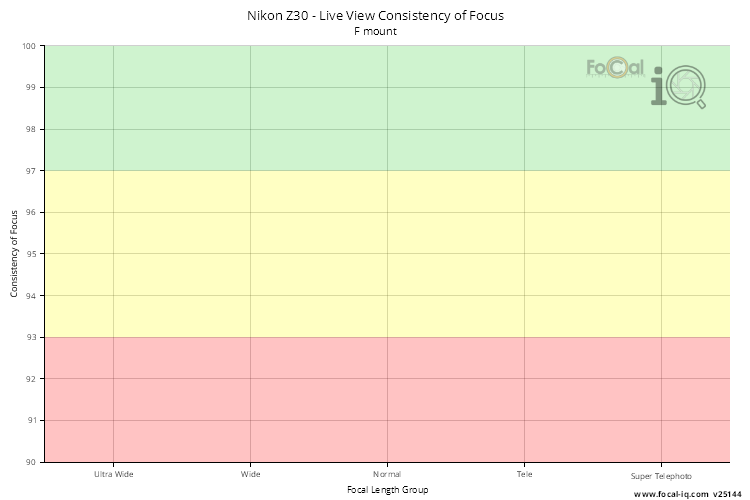
| F Mount | |
|---|---|
| Ultra Wide | - |
| Wide | - |
| Normal | - |
| Tele | - |
| Super Telephoto | - |
Calibration Data
There is no calibration data available for this camera as there is no data available.
Stabilisation Data
There is no stabilisation data available for this camera as the Nikon Z30 does not support in-body stabilisation.
The Dust information shows how dust affects the sensor for the Nikon Z30.
Each metric is given a score between 0 (poor) and 100 (excellent). An overall score close to 100 suggests the camera is less affected to dust, although as FoCal IQ shows a view of all cameras, this does not mean that every example of this camera will behave the same.
Summary
The following information shows the metrics used to build the overall score:
| All Mounts | |
|---|---|
| Widest Clean Aperture | f/11 |
| Typical Spot Count | 23.5 |
| Typical Spot Size | 0.09mm |
| Typical Spot Max Opacity | 5.6% |
| Typical Impact | 5.6% |
Dust Perception Factor
The Dust Perception Factor is a calculation which represents how likely you are to notice the dust spots on the sensor for typical shooting. A higher value indicates a higher likelihood of noticing the spots.

Dust Spot Count
The Dust Spot Count shows the typical number of spots found on the sensor during testing.
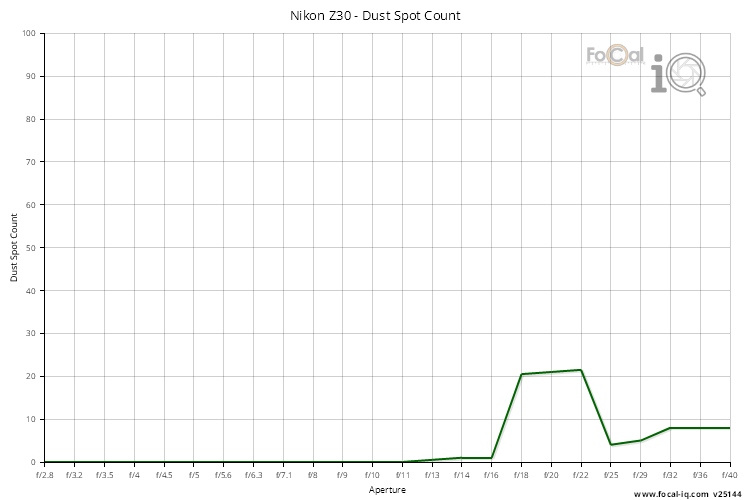
Largest Spot Size
The Largest Spot Size is the typical size (diameter in microns) of detected spots across the aperture range.
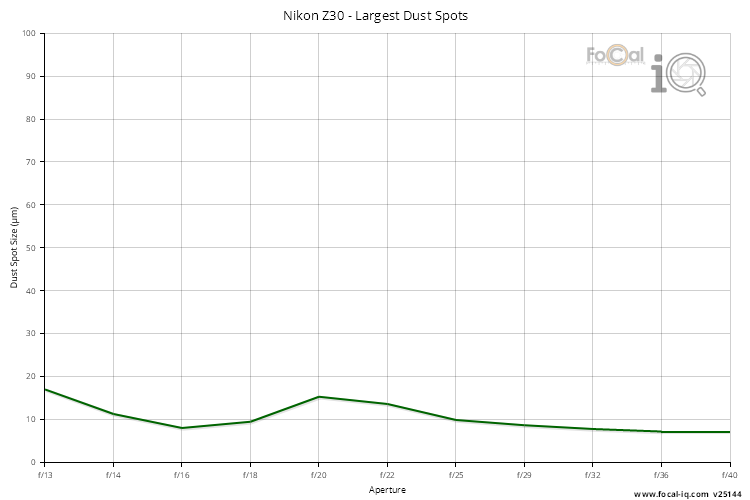
Maximum Opacity
The Maximum Opacity shows the typical opacity of the most obvious spot on the sensor.
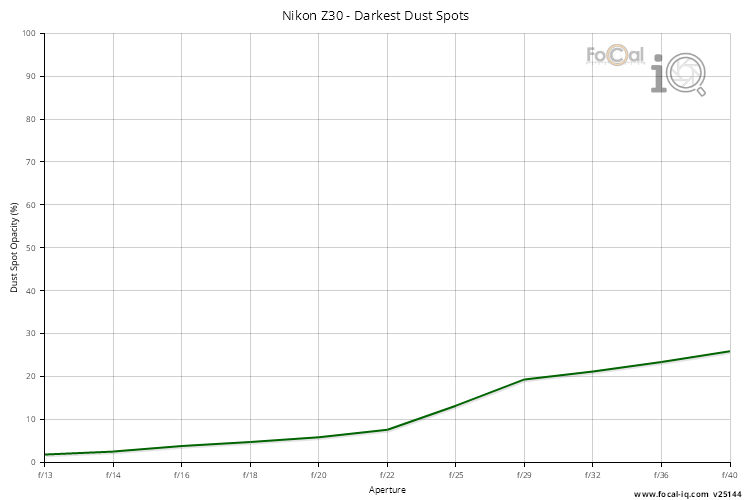
Total Area Affected
The total area affected is the typical coverage of all dust spots on the sensor.
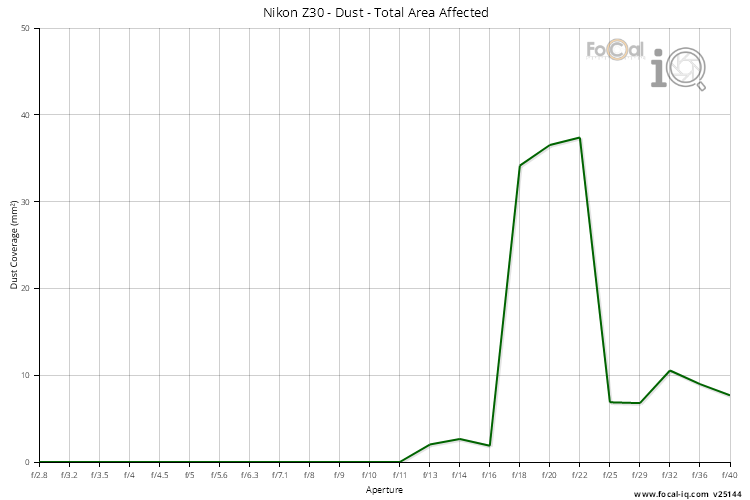
Dust Impact
The following image shows the average occurrence of dust spots on the sensor. A darker spot indicates that this area of the sensor sees more dust spots.
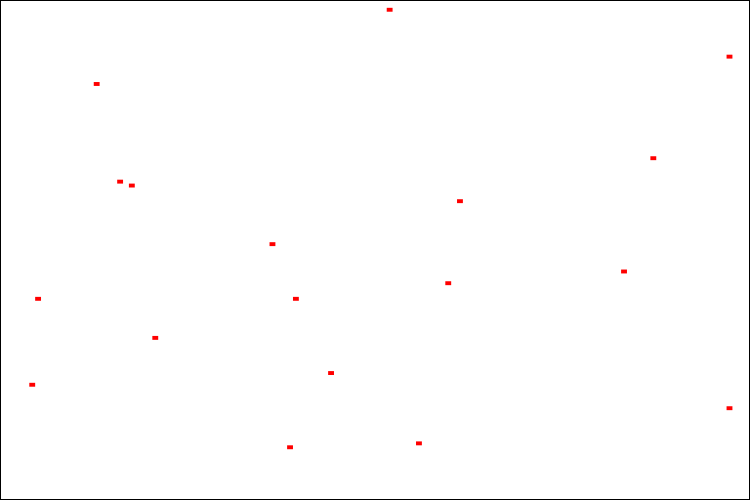
Hot Pixels Score |
The Hot Pixel information shows how hot pixels affect the sensor for the Nikon Z30.
Each metric is given a score between 0 (poor) and 100 (excellent). An overall score close to 100 suggests the camera is less affected by hot pixels, although as FoCal IQ shows a view of all cameras, this does not mean that every example of this camera will behave the same.
Summary
The following information shows the metrics used to build the overall score:
| All Mounts | |
|---|---|
| Typical Hot Pixels | 0 |
| Widest No Hot-pixel Aperture | f/11 |
Hot Pixels
The Hot Pixels chart shows the typical number of hot pixels detected at each aperture.
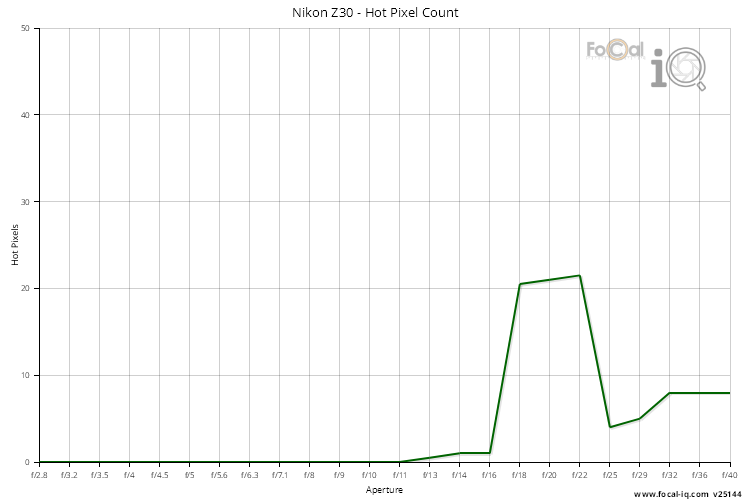
Hot Pixels
The following image shows the occurrence of hot pixels. The darker spots are detected across more apertures.
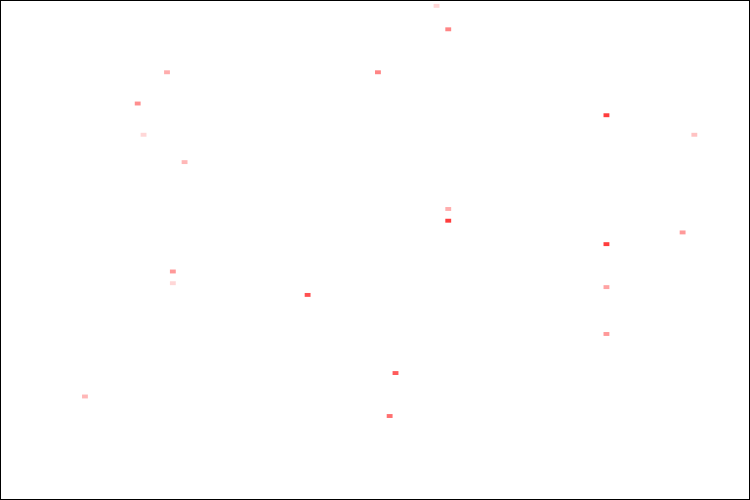
Spotted an error or have feedback about the site? Contact us